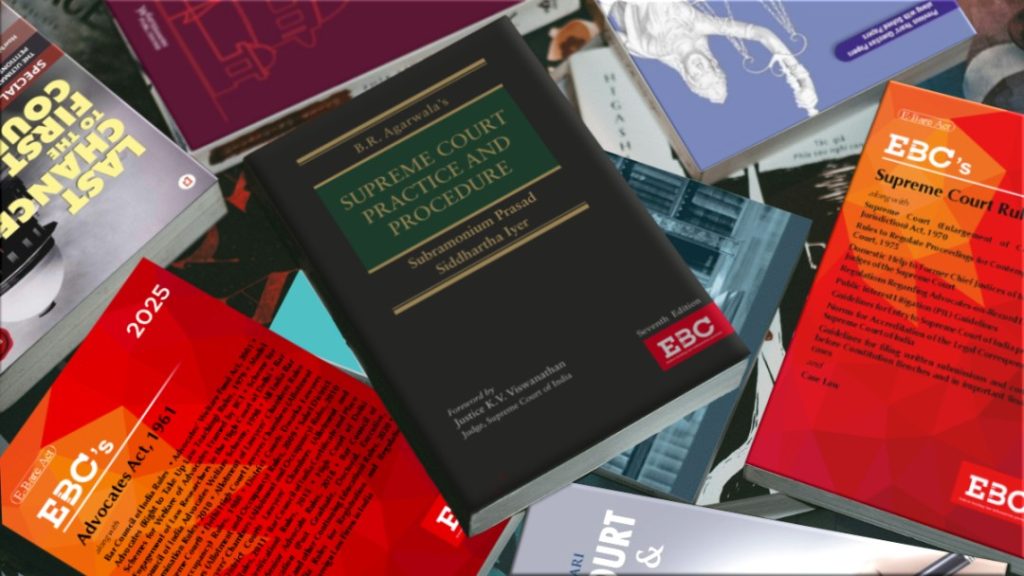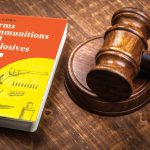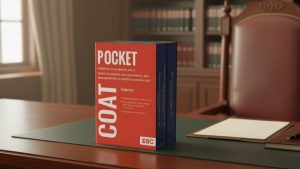
What is the AOR Exam & Why It Matters
The Advocate‑on‑Record (AOR) Examination is conducted by the Supreme Court of India. Only those who clear this exam are entitled to file and conduct cases before the Supreme Court. The exam demonstrates not just legal knowledge, but drafting skills, ethics, and command over leading cases.
Eligibility & Frequency
- Eligibility: You must be a practising advocate enrolled for at least four years in any High Court, plus you must undergo a one‑year training under a senior AOR.
- How Often: Typically the exam is held once a year, usually in May‑June.
- Attempts / Chances: The regulations specify limits on attempts (for example 5 chances), so that you plan your preparation accordingly.
Exam Pattern & Structure
The AOR exam is divided into four papers, all subjective, and each paper tests a different area of legal practice. You must pass all four to qualify.
Here is the breakdown:
| Paper No. | Subject | Focus / Key Areas |
|---|---|---|
| Paper I | Practice & Procedure of the Supreme Court | Jurisdiction (original, appellate, advisory, extraordinary), contempt, PIL, review, curative jurisdiction; Supreme Court Rules; relevant statutes (CPC, CrPC, Limitation Act etc.). |
| Paper II | Drafting | Drafting of Special Leave Petitions (SLPs), writs, review and review petitions, vakalatnama, petitions/applications under Supreme Court Rules; precise format, clarity, structure. |
| Paper III | Advocacy & Professional Ethics | Ethics of advocacy, professional responsibility, rules related to Supreme Court practice, Bar Council rules, codes of conduct; how to present arguments, courtroom norms. |
| Paper IV | Leading Cases | Supreme Court judgments designated as “leading cases” (as per the official list), their principles, ratio, application; ability to analyse and write on case law. |
- Duration: Each paper has a fixed time (usually 3 to 3.5 hours; this can vary) and must be completed within the allocated time. Speed and precision matter.
- Mode: Mostly pen‑and‑paper, though there has been movement toward computer‑based test (CBT) especially for Paper I, but online mode experienced technical glitches. As a result, notices have required some papers be redone offline or mode changed.
Syllabus – Key Topics To Cover
To prepare adequately, here are main syllabus topics organized by paper with sub‑topics. You must master both breadth and details.
Paper I: Practice & Procedure of the Supreme Court
- Jurisdiction of the Supreme Court: original, appellate (civil & criminal), advisory, extraordinary.
- Supreme Court Rules, Procedures, Practice Manuals.
- Orders, Decrees, Enforcement of Orders; Review, Revision, Curative Jurisdiction.
- PIL (Public Interest Litigation), Contempt, Doctrine of Merger, Jurisdictional transfer.
- Statutory provisions under CPC, CrPC, Limitation Act, and such supporting Acts.
Paper II: Drafting
- Applications/petitions: SLPs, writs, review petitions, appeals.
- Vakalatnama and execution of Vakalatnama.
- Drafting rules, format, correct legal style, clarity, structure.
Paper III: Advocacy & Professional Ethics
- Advocacy skills: argument presentation, courtroom decorum, legal advocacy norms.
- Professional ethics: Bar Council of India Rules, Advocates Act, regulations in Supreme Court, conflict of interest, clients’ interest etc.
Paper IV: Leading Cases
- Official list of “Leading Cases” provided by the Supreme Court; the list is updated periodically. Knowing key judgments, their legal principles, their application.
- Ability to analyse cases, write summaries, compare and contrast, connect them with current law.
Recent Changes & Important Notifications
- In 2024, the Supreme Court attempted to switch Paper‑I to computer‑based mode (CBT) for “Practice & Procedure”, but encountered technical glitches. Consequently, that paper was cancelled and rescheduled, and many candidates shifted back to pen‑and‑paper mode.
- Keep track of official notifications from the Supreme Court’s AOR Examination section (dates, format, venue) because changes are periodically introduced.
Preparation Strategy – Step by Step
To maximise chances of success, follow a structured approach. Below is a recommended roadmap:
- Start with Official Notification
First, read the current year’s AOR notification, noting deadlines, exam dates, syllabus/specifications. This sets your preparation boundary. - Obtain Syllabus & Leading Cases List
Download the latest syllabus and list of leading cases from the Supreme Court site. Ensure you have the current list. - Gather Study Material
Collect Supreme Court Practice & Procedure manuals, Supreme Court Rules, judgments of leading cases, past year AOR papers, drafting templates. - Make a Study Plan with Milestones
Allocate sufficient time to each paper. For example: Practice & Procedure 30‑35%, Drafting 25‑30%, Professional Ethics 15‑20%, Leading Cases 15‑20%. - Practice Writing & Drafting Frequently
Since all papers are subjective, practice drafting petitions, arguments, writing summaries and answers under timed conditions. - Focus on Leading Cases
Read full judgments, but also prepare case summaries, legal principles, and how to apply the rulings to hypothetical fact‑patterns. - Attend Lectures / Use Mock Tests
Online or offline lectures by AORs, mock tests or practice exams help simulate exam conditions. Also help with time management. - Review, Revise, & Keep Updated
Read up on any new Supreme Court Rules / amendments, newly decided leading cases, and maintain current knowledge of professional ethics.
Common Challenges & How to Overcome Them
- Time management: Many candidates know law well but cannot finish within time. Therefore, timed practices are essential.
- Drafting style: Poor formatting or structure leads to loss of marks. Always maintain clarity and brevity.
- Case law retention: Leading cases need to be memorised but also understood in principle. Use summaries, mind maps or flash cards.
- Ethics & rules: These are frequently tested but often ignored. Give them due time.
- Changes in exam mode / notification: Always check official updates; occasionally exam mode, pattern, or schedule shifts.
Here’s a reference that could be your go-to list to prepare for the AOR Exam.
















